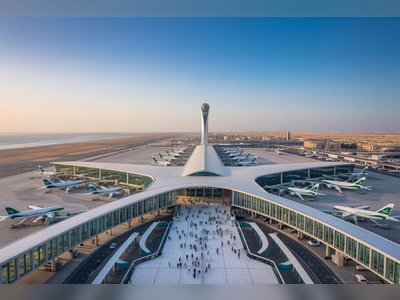
Watchdog rejects Met's claim that he supported facial recognition
Biometrics commissioner says force was wrong to say he backed use of the technology
The official biometrics commissioner has rebuked the Metropolitan police after it falsely claimed that he supported its use of facial recognition CCTV in an equalities impact assessment published as the force made its first operational use of the controversial technology.
Prof Paul Wiles, a former chief scientific adviser to the Home Office, corrected the claim in a statement on his official website after the Met used the technology in Stratford, east London, on Tuesday. “I am aware that the Metropolitan police service have produced an equality impact assessment in relation to their deployment of live facial recognition (LFR),” he said.
“In that document they claim that I ‘supported the concept of LFR’. In fact I have continually said that we need proper governance of new biometric technologies such as LFR through legislation. In my view it is for parliament to decide whether LFR ought to be used by the police, and if so, for what purposes.”
Wiles, who has been the biometrics commissioner for more than four years, had previously made public his reservations about the roll-out of facial recognition CCTV, which automatically scans the faces of people to determine their identity.
After South Wales police defeated a legal challenge over its use of facial recognition last September, Wiles said it was for parliament to decide “whether there should be a specific legal framework for the police (and others) to routinely deploy new biometrics including AFR but also voice recognition, gait analysis, iris analysis, or other new biometric technologies as they emerge”.
However, he had been softer in his criticism than some other government-appointed experts. The information commissioner, Elizabeth Denham, said last October that “police forces need to slow down and justify” use of live facial recognition, adding that there should be “a statutory and binding code of practice issued by government” before it is brought into use.
The surveillance camera commissioner, Tony Porter, said in a statement on the south Wales ruling that he “would urge a degree of caution on the part of the police to regard the judgment as being a green light” for generic deployment of an “intrusive tool with human rights and public confidence implications”.
The Met had updated its equalities impact assessment by Wednesday afternoon, including a link to Wiles’s statement. A spokesperson for the force said: “The MPS welcomes the biometric commissioner’s interest in developing guidance to cover use of biometric systems and information.
“We have been keeping the biometrics commissioner informed about the MPS’ deployment of LFR and look forward to any opportunities to work with him about the use of new biometrics in law enforcement. We have updated the equality impact assessment to accurately reflect his position.”
However, the gaffe exposed a number of other gaps in the consultations made by the force, which had published documents and gone ahead with operational deployment on Tuesday despite not having received responses from groups including the Met’s black and Sikh police associations and its trans network association.
The Met said its first operational use of facial recognition, outside the Stratford Centre in east London on Tuesday, was met with an “overwhelmingly positive” response from members of the public. Acting Ch Insp Chris Nixon of the force’s north-east basic command unit said: “My officers worked closely with the technology team to use the technology effectively, and would be keen to deploy it again. No positive alerts were generated by the system on this occasion and there were no false alerts or incorrect identifications.”
Prof Paul Wiles, a former chief scientific adviser to the Home Office, corrected the claim in a statement on his official website after the Met used the technology in Stratford, east London, on Tuesday. “I am aware that the Metropolitan police service have produced an equality impact assessment in relation to their deployment of live facial recognition (LFR),” he said.
“In that document they claim that I ‘supported the concept of LFR’. In fact I have continually said that we need proper governance of new biometric technologies such as LFR through legislation. In my view it is for parliament to decide whether LFR ought to be used by the police, and if so, for what purposes.”
Wiles, who has been the biometrics commissioner for more than four years, had previously made public his reservations about the roll-out of facial recognition CCTV, which automatically scans the faces of people to determine their identity.
After South Wales police defeated a legal challenge over its use of facial recognition last September, Wiles said it was for parliament to decide “whether there should be a specific legal framework for the police (and others) to routinely deploy new biometrics including AFR but also voice recognition, gait analysis, iris analysis, or other new biometric technologies as they emerge”.
However, he had been softer in his criticism than some other government-appointed experts. The information commissioner, Elizabeth Denham, said last October that “police forces need to slow down and justify” use of live facial recognition, adding that there should be “a statutory and binding code of practice issued by government” before it is brought into use.
The surveillance camera commissioner, Tony Porter, said in a statement on the south Wales ruling that he “would urge a degree of caution on the part of the police to regard the judgment as being a green light” for generic deployment of an “intrusive tool with human rights and public confidence implications”.
The Met had updated its equalities impact assessment by Wednesday afternoon, including a link to Wiles’s statement. A spokesperson for the force said: “The MPS welcomes the biometric commissioner’s interest in developing guidance to cover use of biometric systems and information.
“We have been keeping the biometrics commissioner informed about the MPS’ deployment of LFR and look forward to any opportunities to work with him about the use of new biometrics in law enforcement. We have updated the equality impact assessment to accurately reflect his position.”
However, the gaffe exposed a number of other gaps in the consultations made by the force, which had published documents and gone ahead with operational deployment on Tuesday despite not having received responses from groups including the Met’s black and Sikh police associations and its trans network association.
The Met said its first operational use of facial recognition, outside the Stratford Centre in east London on Tuesday, was met with an “overwhelmingly positive” response from members of the public. Acting Ch Insp Chris Nixon of the force’s north-east basic command unit said: “My officers worked closely with the technology team to use the technology effectively, and would be keen to deploy it again. No positive alerts were generated by the system on this occasion and there were no false alerts or incorrect identifications.”











